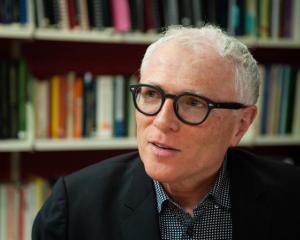Coronavirus could infect 89% of the New Zealand population if left unchecked and up to 80,000 people could die, modelling from researchers at the University of Auckland suggests.
The same modelling shows the lockdown measures now in place could buy the country more than a year for a vaccine or treatment to be developed.
However, the research shows that without a vaccine or cure, cases of Covid-19 will still peak well beyond hospital capacity as soon as any lockdown ends.
The modelling, released today by Te Punaha Matatini, shows measures similar to those now in place can suppress the virus for up to 400 days but infections could spike as soon as they are gone, because the population will not have developed any herd immunity.
However, any fewer restrictions would result in a peak of at least six times hospital capacity within just a few months.
The paper compares a "suppression strategy" - a sustained period of restrictions - with a "mitigation strategy", where controls are lifted for brief periods before being put in place again as infections rise and ICU beds fill up.
In all scenarios, the lockdown period is modelled to last significantly longer than the initial four weeks that began today.
However, one of the researchers, University of Auckland Professor Shaun Hendy, told RNZ the current lockdown could be sufficient if all measures were rigidly enforced.
"Provided the contact tracing, testing, and containment strategy works then we may be able to relax in four weeks. But we need to cut cases to just a handful."
The researchers wrote that both strategies were "fraught with uncertainty" but suppression at least had the advantage of buying New Zealand time until a vaccine or treatment became available.
Mitigation, which aimed to let the epidemic go ahead at a controlled rate while creating herd immunity, was "a tempting approach", the researchers wrote.
However to be successful, each case would have to result in less than one other new case.
"It remains unknown whether this will be achievable in practice in New Zealand. There is no evidence that it has yet been achieved in comparable, western democracies, including those that have instigated major lockdowns such as Italy."
Modelling showed that, left unchecked, the virus would infect 89% of the population and up to 80,000 people would die.
Hospital capacity would be exceeded once 40,000 people had the virus, and the peak of the epidemic here would exceed that capacity ten times over.
Under the strictest suppression measures, which included social distancing, case isolation, household quarantine, and closing schools and universities, the fatalities would drop to just 0.0004 percent - about 20 people. Hospital capacity would not be exceeded for over a year.
However, that scenario would require the restrictions to remain in place until a vaccine or other treatment was developed.
"When controls are lifted after 400 days, an outbreak occurs with a similar peak size as for an uncontrolled epidemic," the researchers wrote. "In other words, these strategies can delay but not prevent the epidemic."
Despite that risk, the researchers advocated for suppression over mitigation.
"A major advantage of suppression strategies as opposed to mitigation is that early suppression buys time. This has two key benefits: it may be possible to delay the epidemic for long enough that a vaccine and/or effective treatment become(s) widely available in NZ; and it allows NZ to learn from rapidly unfolding events in other countries," they concluded.
"This could include learning which mitigation strategies are most successful."
Comments
Let's face it, we are dealing with the unknown. It's incredibly irresponsible to print information like this at the start of lockdown. People are already stressed out, who in their right mind would make the decision to lead with this? We've been told CORVID19 is "like no other virus" yet the modeling being used is for viruses we already know. Which is it? Even if true, maybe give people some time to deal with the 4 weeks of lockdown before filling their heads with all the doom and gloom. Just because some scientists models something doesn't mean it's going to happen. We still don't have a consensus on global warming yet amongst scientists and those models. How about a little common sense and less sensationalism!
Up to 80,000 people could die according to the modelling.
1. "Up to" that many is an upper estimation or a "worst scenario" according to the modelling.
2. "Could die" is information not based on experience. It is not based on what will happen either because only God knows what will happen.
3. Being stated that way is to put fear into readers minds.
4. All this based on the idea that we all now being in stage 4 are going to do nothing! We are already doing something. We are mostly obeying the governments directions. We are also policing not going anywhere and not going to school or work or recreation or sport.
5. A vaccine is essential because as the article says even if one is found fairly soon hospitals may not be able to cope with the numbers the modeling throws up.
We will see. Sometimes in order not to panic or worry people it is best not to speculate.










